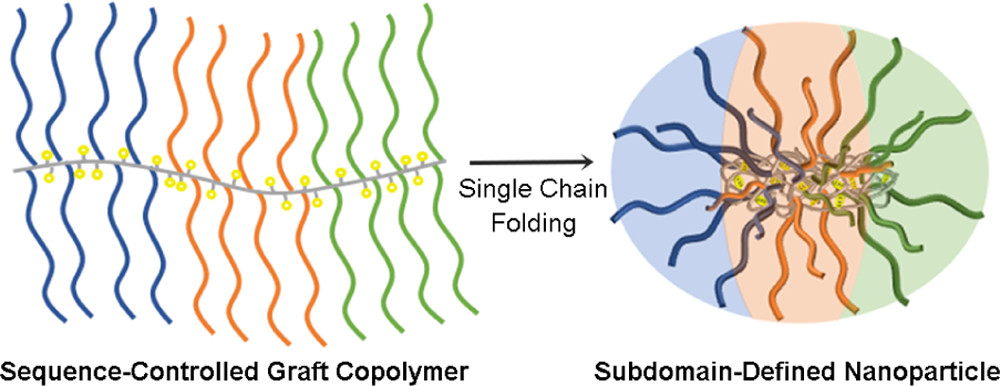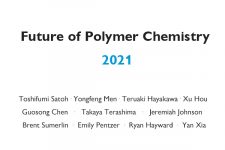“Folding of Sequence-Controlled Graft Copolymers to Subdomain-Defined Single-Chain Nanoparticles” by Jiyun Nam, Sangwoo Kwon, Yong-Guen Yu, Ho-Bin Seo, Jae-Suk Lee, Won Bo Lee, YongJoo Kim, Myungeun Seo was published in Macromolecules. This work was done in collaboration with the Jae-Suk Lee group at Gwangju Institute of Science and Technology for the macromonomer synthesis, and the Won Bo Lee group at Seoul National University & YongJoo Kim at Kookmin University for dissipative particle dynamics simulations.
Core cross-linked star (CCS) polymers represent an intriguing class of architecture-controlled polymers. Typically in size range of 10 – 100 nm, a CCS polymer behave as a stable hairy polymer nanoparticle containing a number of linear polymer chains (arms) covalently tied to a cross-linked core. We have been interested in synthesis of miktoarm CCS polymers, which consists of more than one kind of polymer arms, and how to control compartmentalization within the CCS architecture (a brief summary of our work on this topic can be found here). While the most popularly employed “arm-first” methodology allows to incorporate well-defined polymer arms synthesized by controlled polymerization techniques, the arm number and their spatial arrangements are difficult to control precisely.
Here we present a conceptually new route to CCS polymers by starting with a well-defined graft copolymer precursor. We introduce a desired number of side chains per polymer (on average) along with photodimerizable groups on the graft copolymer backbone. By employing graft-through ring opening metathesis polymerization and utilizing norbornene as a spacer, macromonomers with number average molar masses of > 10 kg mol-1 can be readily incorporated. Then in a dilute condition, the graft copolymer precursor is transformed to a CCS polymer via single chain collapse. As the molecular information encoded in the precursor is directly translated into the CCS architecture as if a polypeptide folds into a globular protein, unprecedented control over structural parameters can be achieved.
More importantly, we can control the sequence of side chains in the graft copolymer precursor. We demonstrate that random and block sequences exhibits in totally different self-assembly behavior of the resulting miktoarm CCS polymers following different scaling relationships. We further show that a ternary graft copolymer can produce a CCS polymer containing three subdomains by carefully choosing the block sequence. Check out more details in the following link: https://pubs.acs.org/doi/full/10.1021/acs.macromol.1c01674.


